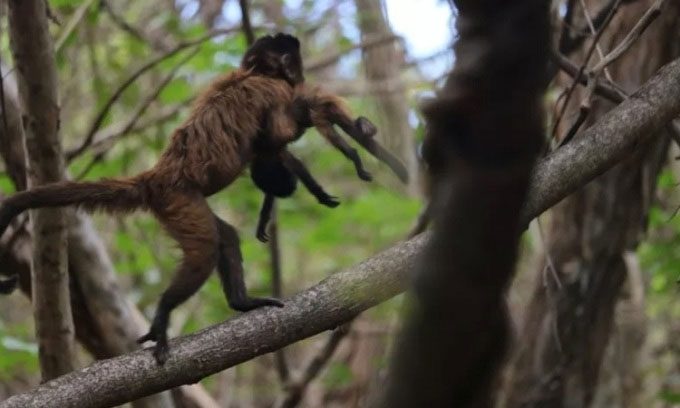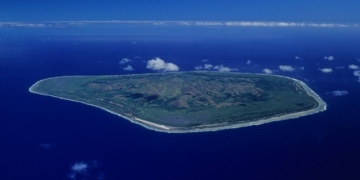Brazilian scientists describe the death of a monkey with a leg deformity in the wild, revealing that the mother monkey and the entire troop treated the deformed infant similarly to other members.
A study published on February 15 in the journal Primates found that the infant monkey’s leg deformity caused it to have an unstable posture when the mother carried it, increasing the frequency of repositioning and potentially leading to its death.

Mother monkey carrying the deceased infant among branches. (Photo: Tatiane Valenca)
Mother monkey Baleia carried her infant, Balaio, in a manner similar to her other offspring, albeit with some adjustments, according to Tatiane Valença, a researcher at the University of São Paulo and the Primate Research Organization of Central and South America in Brazil. Consequently, the mother had to increase the frequency of readjusting the position of her infant on her back.
Capuchin monkeys are native species found in tropical forests throughout Central and South America. They can grow up to 56 cm long, weigh 4 kg, and have tails nearly as long as their bodies. They exhibit complex social structures, living in troops of 10 to 35 individuals. Monkeys typically carry their young while foraging for food, particularly when opening nuts. Additionally, troops often use stones as tools to crack open palm fruit. Capuchins usually place their tails on the ground or lean them against trees to enhance stability during these activities. The impact of nut-cracking also places the infant in an unstable position, leading the mother monkey to occasionally lift her tail.
The deformed infant was welcomed by the troop, despite the difficulty of carrying it. Capuchin monkeys tend to show significant interest in infants, approaching them, grooming them, staring at them, and even kissing them, Valença noted.
However, the infant itself struggled greatly to cling to its mother’s back and to other troop members due to its leg deformity. While adult capuchins with disabilities can adapt their movements and behaviors well enough to forage, live with peers, and reproduce like any other troop member, this proved to be very challenging for the infant, the research team explained.
When the infant died, although the researchers did not observe exactly what happened, they speculated that it likely fell. “We saw the infant the day before it died. It was still healthy. After its death, we examined the body. The skin around the left eye was bruised and swollen, suggesting the hypothesis that the infant died from injury. The leg deformity may have contributed to its death,” Valença said.
The mother monkey attempted to carry her deceased infant for several hours and fed on flies buzzing around. She had to stop several times to navigate through branches, dropping the body when jumping to another tree. No other adult monkeys aside from the mother interacted with the deceased infant, but four younger monkeys showed interest by approaching, touching, and grooming the body.


















































